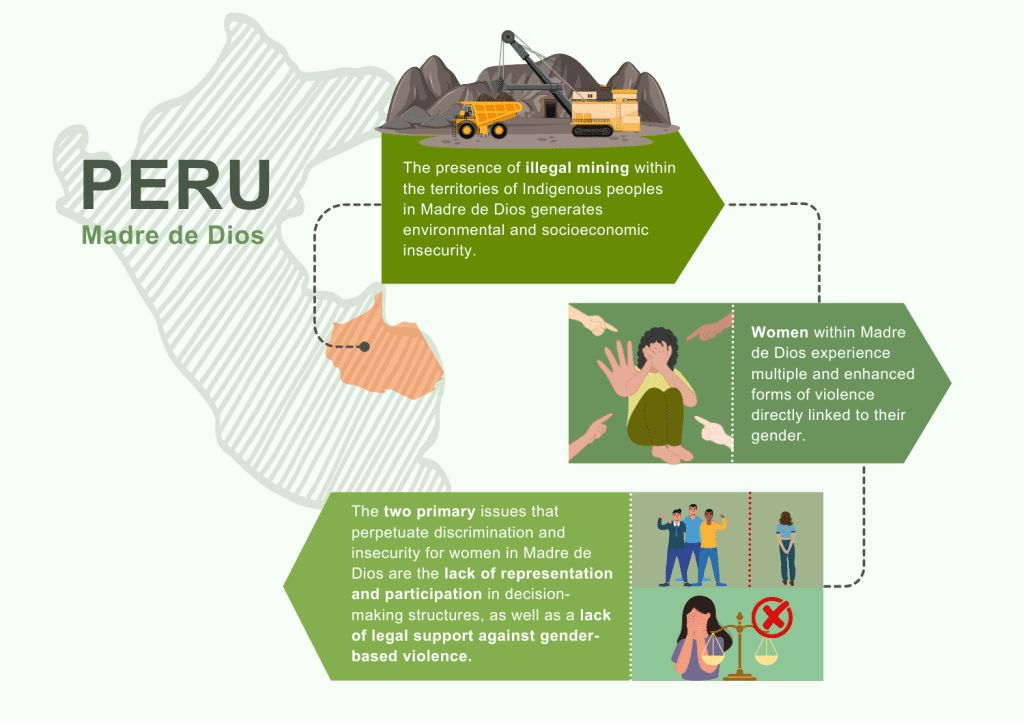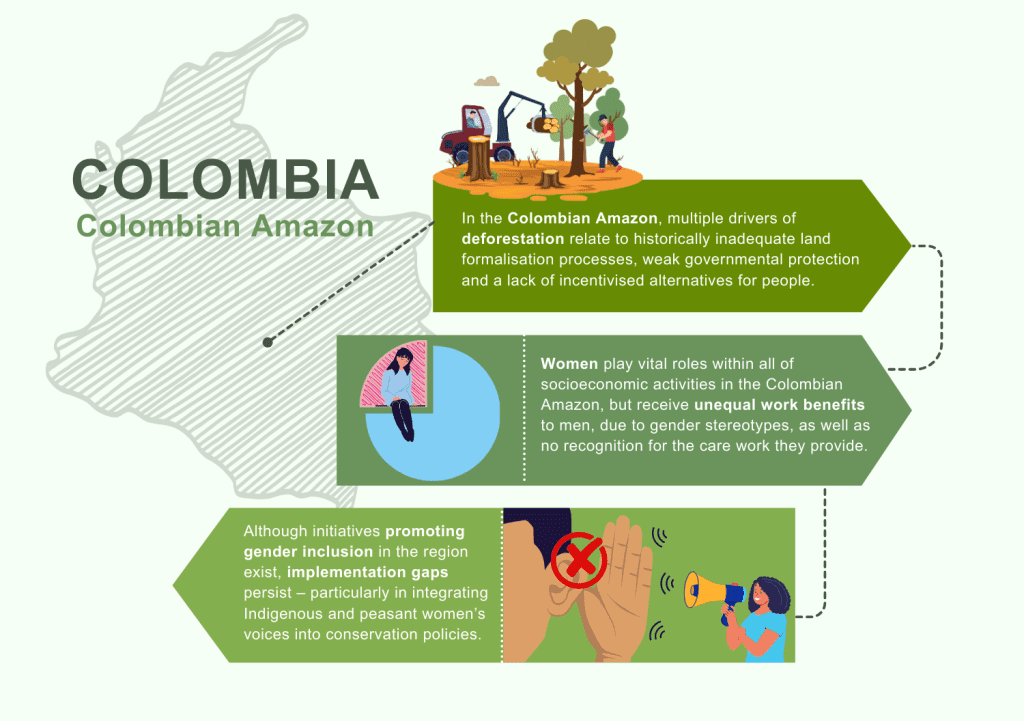IUCN NL receives 4.6 million euros for pioneering…
10 April, 2025
Thursday 06 march 2025
Photo: Woman defender in Madre de Dios. © Diego Perez / SPDA
Applying a gender lens on socio-environmental issues reveals important insights regarding the realities and challenges that women experience in the Amazon region, including gender-based violence. Amplifying women’s voices in policy frameworks contributes to a more just and sustainable future for the Amazon.
Based on studies conducted in the Peruvian and Colombian Amazon, IUCN NL therefore published the report ‘Women in a degraded Amazon: struggles for land, body and nature’, with the support of Sociedad Peruana de Derecho Ambiental (SPDA), Fundacion para la Conservación y Desarrollo Sostenible (FCDS), Federación Nativa del Río Madre de Dios y Afluentes (FENAMAD) and Comité de Gestión de la Reserva Nacional Tambopata (CDG).
The report is bringing forward the lived experiences of women from Madre de Dios in Peru and six departments of the Colombian Amazon, highlighting how extractive economies, weak governance and structural inequalities contribute to environmental and social harm; both of which disproportionately affect women.
‘In the communities that are exposed to mining, women cannot walk freely through their territory, they have to be careful not to expose themselves too much to avoid attacks. I don’t feel free to walk around my territory either, but we still have to do surveillance and check every point to see if outsiders have entered, even though we don’t have geo-referencing,’ shares an Indigenous woman from Madre de Dios (anonymised for safety reasons).
‘In the communities that are exposed to mining, women cannot walk freely through their territory, they have to be careful not to expose themselves too much to avoid attacks.’
- Indigenous woman from Madre de Dios


The Amazon regions of Peru and Colombia, while differing in their sociopolitical and environmental context, face similar challenges that highlight the deep interconnections between gender and environmental issues. These parallel studies show how extractive economies, such as mining and cattle ranching, intensify violence with wide-reaching social, economic and ecological impacts. Below we present part of the findings of the studies.
‘Extractive activities and gender-based violence are deeply intertwined: illegal mining and agricultural expansion have turned the Amazon into a high-risk territory for women.’
- Mariel Cabero, Expert Environmental Justice at IUCN NL
The recommendations below are based on findings from the context-specific gender dynamics in the Peruvian and Colombian Amazon, and as such they aim to address the challenges that were found in each region respectively. They may, however, also resonate with the situation in other Amazon countries. More recommendations can be found in the report.
Peruvian Amazon:
Colombian Amazon:
The report ‘Women in a degraded Amazon: struggles for land, body and nature’ is published by IUCN NL and based on two different studies applying an intersectional feminist approach to examine gendered dimensions of environmental degradation in the Peruvian and Colombian Amazon. While Peru and Colombia face similar challenges, their distinct sociopolitical, economic and environmental contexts are examined separately — each with a tailored focus.
Funding sources for these studies are the Agence Francaise De Developpement (AFD) — in the framework of the project PIDDA Rights, the Norwegian Agency for Development Cooperation (NORAD) through Norway’s International Climate and Forest Initiative (NICFI) — as part of the project Amazon Rights in Focus.
